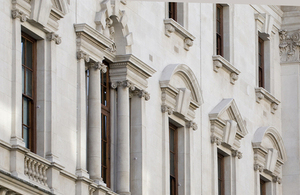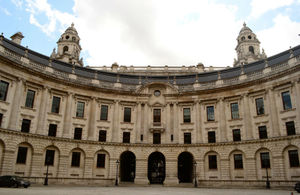UK agrees two deals with major gulf trading partner Qatar
The UK enhanced its relationship with our third largest Gulf trading partner, announcing two significant agreements to boost trade and investment.
UK trade minister Ranil Jayawardena met Qatar’s Minister of Commerce and Industry H.E. Sheikh Mohammed bin Hamad Al-Thani in London today [24 August] to agree the new partnerships at the third UK-Qatar Joint Economic and Trade Committee (JETCO).
It comes after the launch of negotiations on a free trade agreement with the Gulf Cooperation Council (GGC) in June. An agreement with the GCC is an opportunity to grow an overall trade relationship worth £32.4 billion in 2020, breaking down barriers to trade and supporting jobs across the whole of the UK.
Minister for International Trade, Ranil Jayawardena, said:
Qatar is an important trade and investment partner for Britain. I believe we should nurture and maximise the strength of our relationship to make our economies more resilient and prosperous.
We are committed to taking steps to further deepen the trade and investment relationship we share with Qatar, and today’s JETCO signals our ambition through two significant agreements.
The two new MOUs include a new agreement between Department for International Trade (DIT) and Qatar’s Investment Promotion Agency, to help British businesses such as to enter the Qatari market. The collaboration will provide information to companies on strategic investment opportunities and provide guidance on market entry options.
On top of this, DIT also opened the UK export market to Qatar for the supply of vitamins and supplements, enabling Holland & Barrett to export these products to the country.
Nick Parker, Director of International Development, Holland & Barrett said:
Holland and Barrett’s mission is to make health and wellness a way of life for everyone and through our two franchise stores in Qatar we have been able to serve our customers there since 2015, however until now our franchise partner has been unable to offer our own range of vitamins and supplements.
During the JETCO, UK Export Finance (UKEF) signed a memorandum with Qatar Development Bank to boost efforts between the UK and Qatari companies by sharing expertise on export finance, insurance products and cooperation on projects which involve both UK and Qatari goods and services.
The meeting of Ministers concluded with the signing of a Joint Statement outlining commitments to tackling market access issues on both sides and growing trade in a range of priority sectors, including healthcare and life sciences, education, and food and drink.
The next meeting of the JETCO will be organised by the State of Qatar’s Ministry of Commerce and Industry and will be held in Doha in 2023.



